29th G8 summit
| 29th G8 summit | |
|---|---|
 29th G8 Summit official logo | |
| Host country | France |
| Date | June 1–3, 2003 |
| Follows | 28th G8 summit |
| Precedes | 30th G8 summit |
The 29th G8 summit was held in Évian-les-Bains, France, on June 1–3, 2003. As is usual for G8 summits, there were a range of protests.
Overview
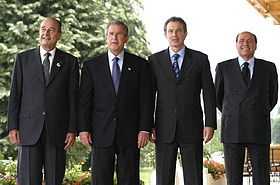
The Group of Seven (G7) was an unofficial forum which brought together the heads of the richest industrialized countries: France, Germany, Italy, Japan, the United Kingdom, the United States and Canada starting in 1976. The G8, meeting for the first time in 1997, was formed with the addition of Russia.[1] In addition, the President of the European Commission has been formally included in summits since 1981.[2] The summits were not meant to be linked formally with wider international institutions; and in fact, a mild rebellion against the stiff formality of other international meetings was a part of the genesis of cooperation between France's President Giscard d'Estaing and West Germany's Chancellor Helmut Schmidt as they conceived the initial summit of the Group of Six (G6) in 1975.[3]
The G8 summits during the twenty-first century have inspired widespread debates, protests and demonstrations; and the two- or three-day event becomes more than the sum of its parts, elevating the participants, the issues and the venue as focal points for activist pressure.[4]
Official G8 Summit magazines which have been published under the auspices of the host nations for distribution to all attendees since 1998; the 2008 edition was published by Prestige Media.[5]
Leaders at the summit
The G8 is an unofficial annual forum for the leaders of Canada, the European Commission, France, Germany, Italy, Japan, Russia, the United Kingdom and the United States.[2]
Core G8 participants
These summit participants are the current "core members" of the international forum:[6]
| Core G8 members Host nation and leader are indicated in bold text. | |||
| Member | Represented by | Title | |
|---|---|---|---|
| |
Canada | Jean Chrétien[7] | Prime Minister |
| |
France | Jacques Chirac[7] | President |
| |
Germany | Gerhard Schröder[7] | Chancellor |
| |
Italy | Silvio Berlusconi[7] | Prime Minister |
| |
Japan | Junichiro Koizumi[7] | Prime Minister |
| |
Russia | Vladimir Putin[7] | President |
| |
United Kingdom | Tony Blair[7] | Prime Minister |
| |
United States | George W. Bush[7] | President |
| |
European Commission | Romano Prodi[8] | President |
Invited (partial participation)
The leaders of a number of non-G8 countries were invited to the summit (Algeria, Brazil, China, Egypt, Greece, India, Malaysia, Mexico, Nigeria, Saudi Arabia, Senegal, South Africa) as well as the President of the Swiss Confederation and representatives of the United Nations, the World Bank, the International Monetary Fund and the World Trade Organization, providing a unique opportunity for an exchange of views on issues relating to sustained growth and international co-operation.
National leaders
-
 Algeria
Algeria -
 Brazil
Brazil -
 China
China -
 Egypt
Egypt -
 Greece
Greece -
 India
India -
 Malaysia
Malaysia -
 Mexico
Mexico -
 Nigeria
Nigeria -
 Saudi Arabia
Saudi Arabia -
 Senegal
Senegal -
 South Africa
South Africa -
 Switzerland
Switzerland
Heads of international organizations
Leaders of the major international organizations were invited to attend the summit.
Priorities
Traditionally, the host country of the G8 summit sets the agenda for negotiations, which take place primarily amongst multi-national civil servants in the weeks before the summit itself, leading to a joint declaration which all countries can agree to sign.
Reconciliation amongst the G8 leaders was the top priority in the wake of the beginning of the Iraq War. The G8 had sharply divided over the American-led invasion.[9] Chirac's broad agenda was organized under four main themes — solidarity, responsibility, security and democracy.[10]
Issues
The summit was intended as a venue for resolving differences among its members. As a practical matter, the summit was also conceived as an opportunity for its members to give each other mutual encouragement in the face of difficult economic decisions.[3]
Citizens' responses and authorities' counter-responses
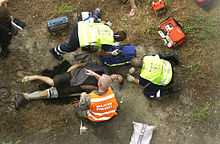
The protests, as well as the usual demonstrations, included a protest at the Aubonne bridge in Switzerland between Lausanne and Geneva, in which two activists suspended themselves from the bridge via a rope, with the rope stretching across the bridge, halting traffic and displaying a banner. As well as arresting various protestors, the police also cut the rope, causing one of the protestors, Briton Martin Shaw, to plunge 20m into a rocky river, resulting in multiple fractures (the other activist, German Gesine Wenzel, was caught by other protestors and could later abseil safely). In January 2005, following a long campaign, a judge said that the police involved should be charged with causing bodily harm by negligence. However in a ruling on 17 February 2006 a judge acquitted the two police officers found responsible on the grounds that their actions had been based on "a series of unfortunate misunderstandings" and therefore were not criminal 1 2.
Gallery
Core G8 participants
-
.jpg)
 Germany
Germany
Gerhard Schroeder, Chancellor -

 Japan
Japan
Junichirō Koizumi, Prime Minister
Notes
- ↑ Saunders, Doug. "Weight of the world too heavy for G8 shoulders," Globe and Mail (Toronto). July 5, 2008.
- ↑ 2.0 2.1 Reuters: "Factbox: The Group of Eight: what is it?", July 3, 2008.
- ↑ 3.0 3.1 Reinalda, Bob and Bertjan Verbeek. (1998). Autonomous Policy Making by International Organizations, p. 205.
- ↑ "Influencing Policy on International Development: G8," BOND (British Overseas NGOs for Development). 2008.
- ↑ Prestige Media: "official" G8 Summit magazine
- ↑ Rieffel, Lex. "Regional Voices in Global Governance: Looking to 2010 (Part IV)," Brookings. March 27, 2009; "core" members (Muskoka 2010 G-8, official site).
- ↑ 7.0 7.1 7.2 7.3 7.4 7.5 7.6 7.7 2003 Evian G-8, delegations.
- ↑ 2003 Evian G-8, delegations; "EU and the G8"
- ↑ Bayne, Nicholas. (2005) Staying Together: the G8 Summit Confronts the 21st Century, p. 141., p. 141, at Google Books
- ↑ Bayne, p. 142., p. 142, at Google Books
References
- Bayne, Nicholas and Robert D. Putnam. (2005). Staying Together: the G8 summit Confronts the 21st Century. Aldershot, Hampshire, England: Ashgate Publishing. 10-ISBN 0-7546-4267-4/13-ISBN 978-0-7546-4267-1; OCLC 217979297
- Reinalda, Bob and Bertjan Verbeek. (1998). Autonomous Policy Making by International Organizations. London: Routledge. 10-ISBN 0-415-16486-9/13-ISBN 978-0-415-16486-3; 13-ISBN 978-0-203-45085-7;10-ISBN 0-203-45085-X; OCLC 39013643
External links
| Wikimedia Commons has media related to 29th G8 summit. |
- Official G8 website: Évian summit, 2003; n.b., no official website is created for any G7 summit prior to 1995 -- see the 21st G7 summit.
- University of Toronto: G8 Research Group, G8 Information Centre
- Campaign relating to police behaviour at a protest at the Aubonne bridge
- Évian - Protest Reports & Photos
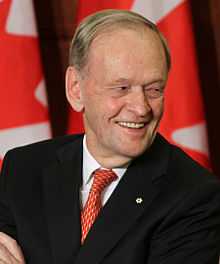
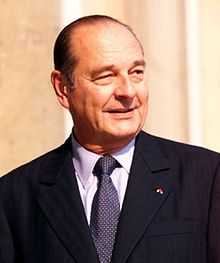
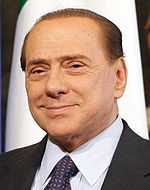
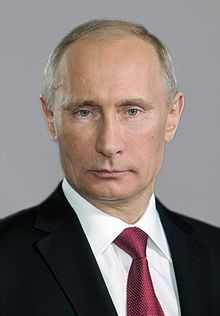
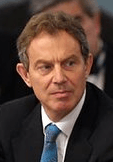
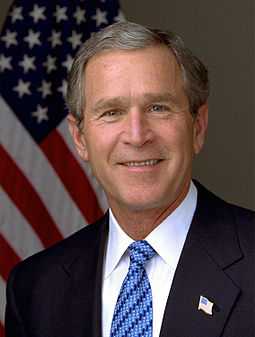
.jpg)